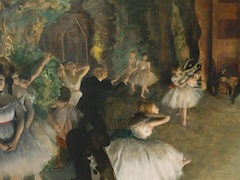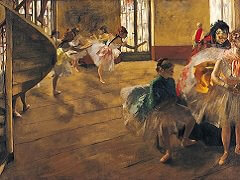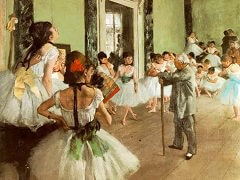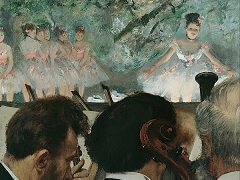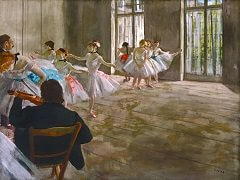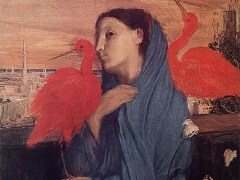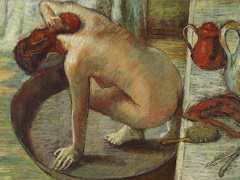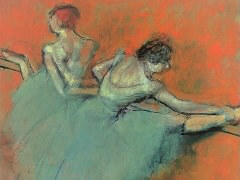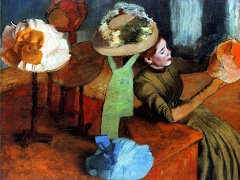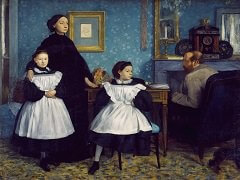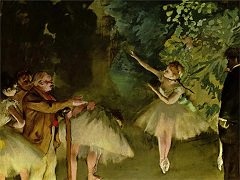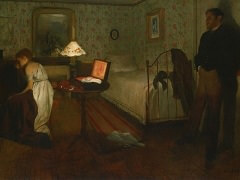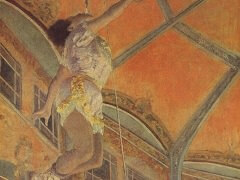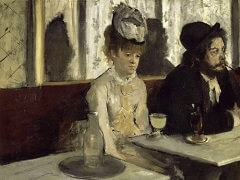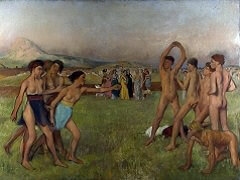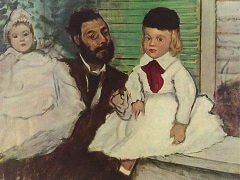Jockeys, 1881 by Edgar Degas
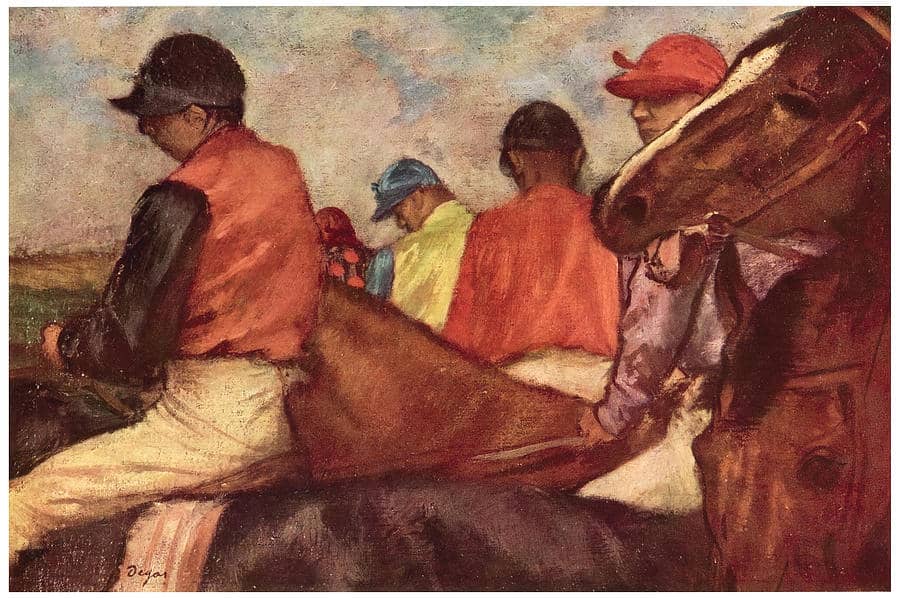
As he advanced, the artist sought to convey his meanings by developing a fragment, rather than completing a whole composition in detail. Compared with earlier Jockeys, this daringly designed picture is full of just that sort of surprise attack which Degas loved. Instead of seeing the horses and their riders at the post, we are suddenly thrust in among them as though the spectator were himself on horseback. This is the close-up, long before that form was invented in the motion pictures. Only Degas would have made the right-hand side of his picture out of two enormous heads of horses, and suggested space by the diminishing size of the jockeys in the center.
Movement is strongly to the left, and the broad energetic drawing, with its emphasis on silhouette, is balanced by the use of primary colors in the jackets: red, yellow, and blue. By this time Degas was replacing the Im-pressionist technique of color spots and broken reflections of light, with a heavier, more sculpturesque treatment. This is a picture of energy; horses and riders moving in a slow, rhythmic procession, close together, almost jostling one another. The pose of the jockey on the left is wonderfully caught, Degas enjoying the sinewy strength of the body under its gay apparel.

